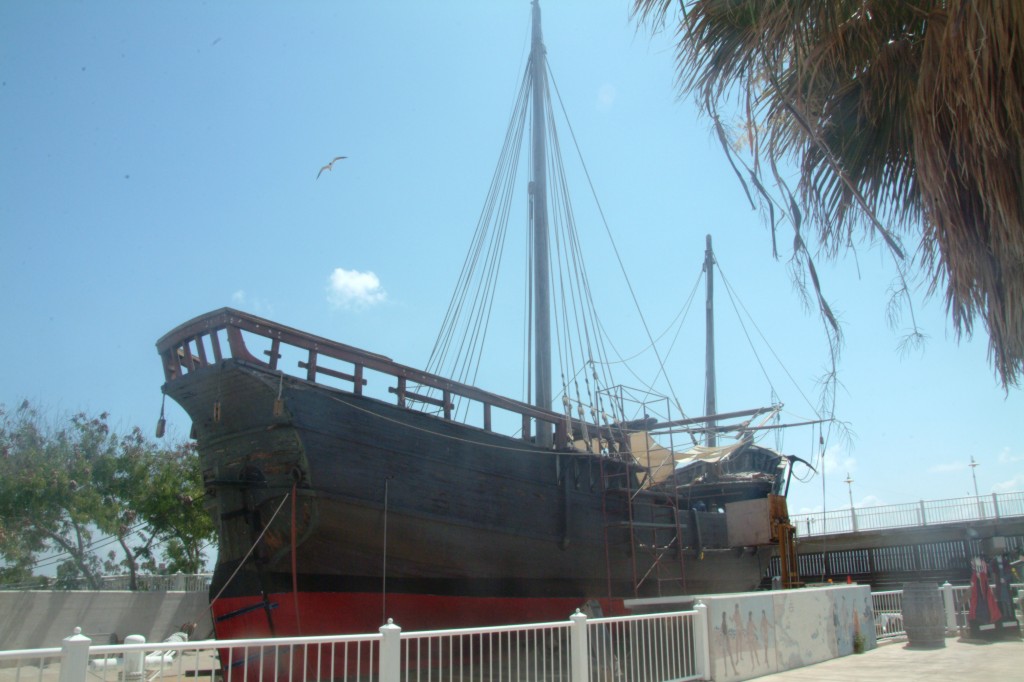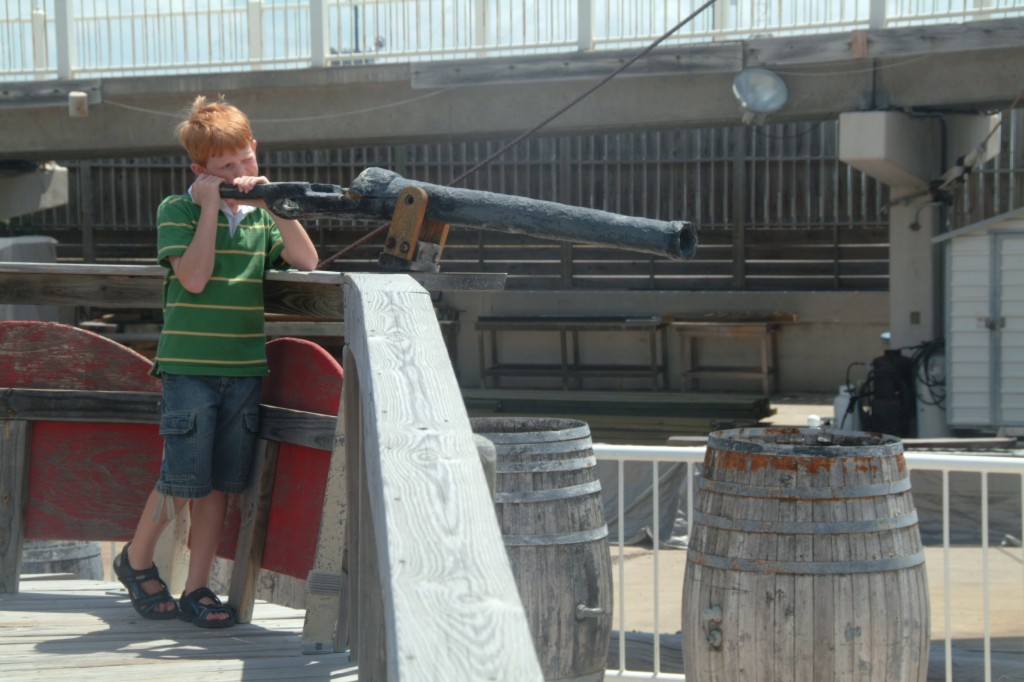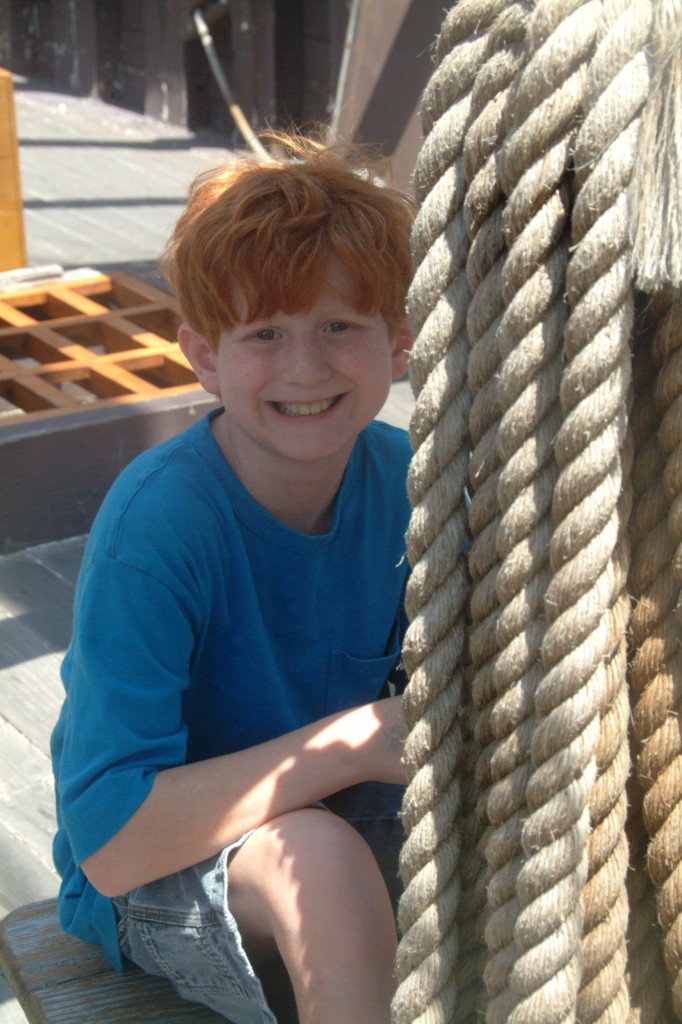It’s a bit ironic that I’m writing about the voyage of Columbus on the birthday of America. This past school year, my kids had their first concentrated introduction to the history of early America. As we studied Columbus, I doggedly reminded them that Columbus did not actually discover America. That distinction perhaps goes to the Vikings, to say nothing of the natives who had been living here for centuries. Nevertheless, Columbus’ voyages started in motion a chain of events that led to the first 4th of July and since I’m feeling patriotic, I’m willing to overlook the pesky historical details.
In celebration of the 500th anniversary of Columbus’ voyage to the New World shipbuilders in Spain constructed exact replicas of the fleet of Christopher Columbus. Authentic 15th century materials, including timber from the same forests and hand forged nails, were used in order to reproduce the three ships as accurately as possible.
Following the exact route of Columbus, the three ships departed from Spain on October 12, 1991. A sixteen city US tour was planned to commemorate the voyage. Five months after leaving Spain the ships arrived in Corpus Christi to a rousing welcome. Thanks to the enthusiastic reception and record attendance in Texas, the three ships now call Corpus Christi their permanent home.
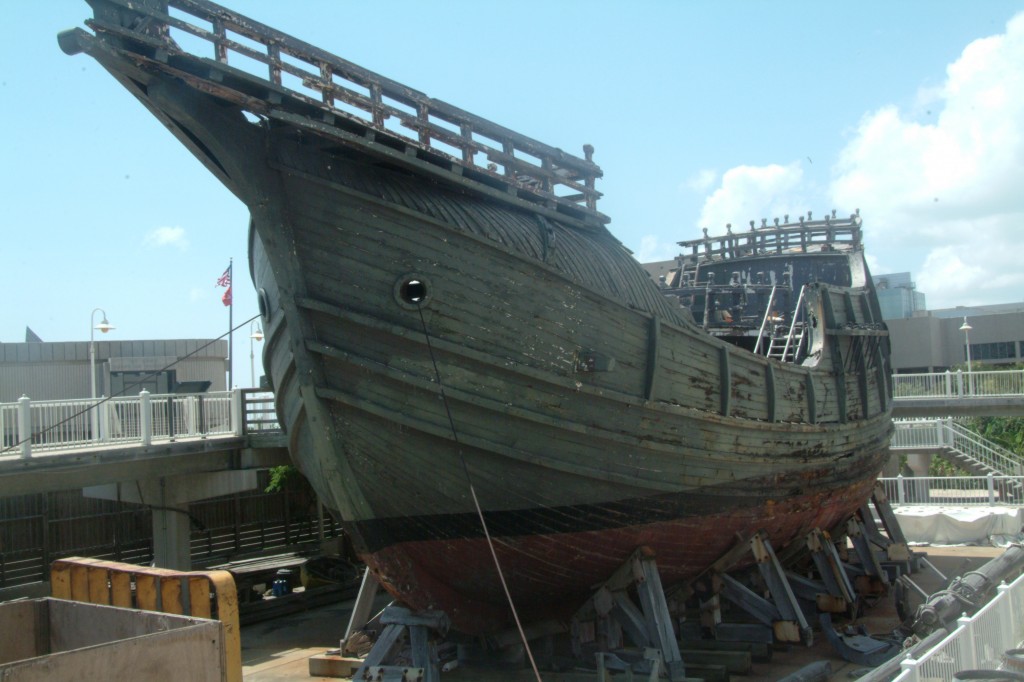 The Santa Maria with the mast lowered
The Santa Maria with the mast lowered
After a ship accident in the harbor, the Santa Maria and the Pinta were moved to the Corpus Christi Museum of Science and History where they are available for tours. Authentic 15th century materials, it seems, do not hold up well, as the ships are under major renovation. Despite the disrepair, climbing aboard the historic replicas opened up a new understanding that we could not imagine from the books that we studied.
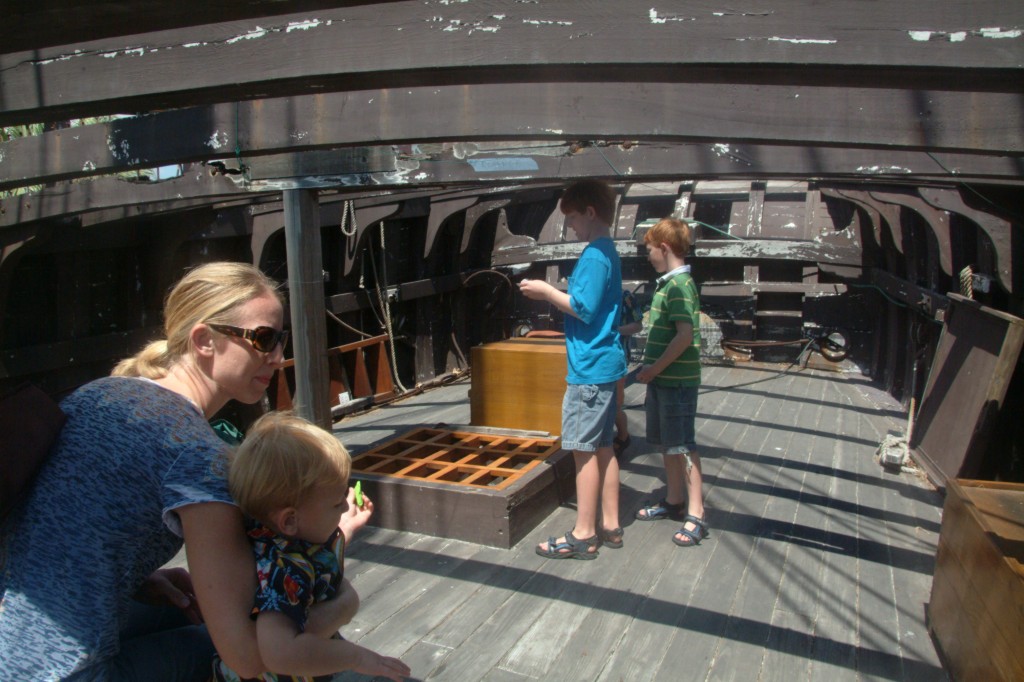 The boys are standing under the cramped and crowded sleeping quarters of the Pinta
The boys are standing under the cramped and crowded sleeping quarters of the Pinta
On board the Pinta, we were able to get a feel for the size of the boat which was relatively small with a deck that was deeply curved to allow the water to flow off the deck. The tour guide showed us the small area where the crew would have slept at night, which included only a small covered area that was protected from the elements. Hammocks, we learned, were introduced after the crew arrived in the islands and until then they slept on the deck. We were also surprised to learn that steering wheels had not yet been invented for boats, so steering was accomplished by pulling a the rudder with a large chain.
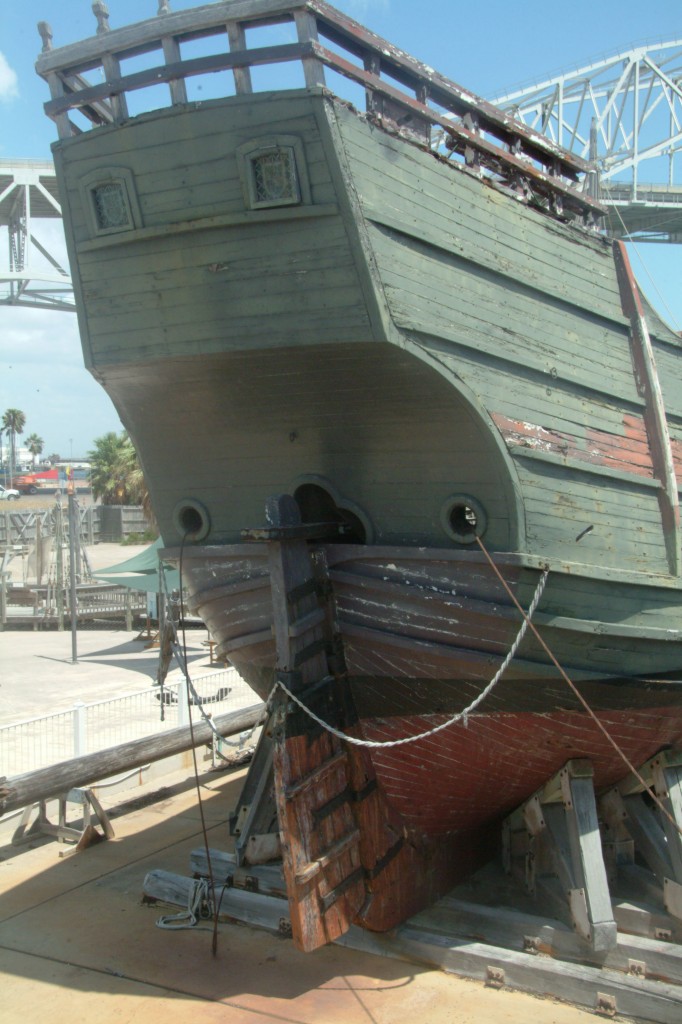 The Flagship Santa Maria with the chain operated rudder system
The Flagship Santa Maria with the chain operated rudder system
Standing on the deck of the boat, I certainly had a new found respect for the bravery required to climb aboard and head for an unknown world. The rustic ship had little in the way of luxury or safety measures. Did I mention that they cooked their food in an open pit at the center of the wooden deck? Despite the dangers and trials, the 87 crew members willingly set sail for worlds unknown with the hope of finding new trade routes and treasures. They were just the first of a string of brave men and women who were willing to risk it all for the promise of freedom. Sighting a primitive piece of land with no sign of riches off the bow of the Pinta must have seemed like a disappointing failure to these sailors. But today, with the grill smoking and the parades filled with flags and patriotism, it feels as though they discovered a great treasure indeed.
~Know Before You Go~
Tours are conducted daily at 10:30am, 11:30am, 12:30pm, 2:00pm, 3:00pm, and 4:00pm. Exploration of the courtyard that includes hands on exhibits is available at any time.
The Columbus Ships are not wheelchair accessible. A reduced price to the Museum is available for those who are in wheelchairs or who have mobility restrictions that will not permit them to access the ships.
